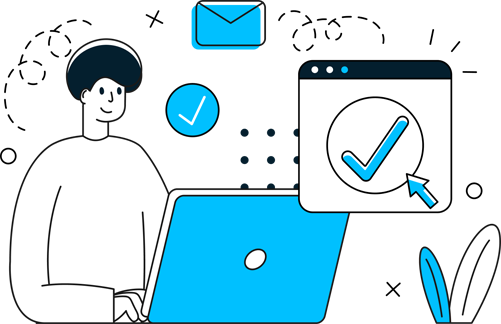The Easiest Way to Make Your Marketing Effective
Table of contents
HOW: How Are You Going to Reach Them?

WHAT: Messaging. What Do You Say
Where to Start
The Purpose of a Business from a Marketing Perspective
Ok, one last thing before I give you my marketing spaghetti recipe.
You could scroll down, but hang with me for a second.
From a marketing perspective, the purpose of a business is crystal clear:
TO GENERATE AND RETAIN CUSTOMERS
This is the heartbeat of any successful company and is the primary goal of every marketing effort. If your marketing isn’t bringing in customers and helping you keep them, something’s off.
So, marketing is not just about getting people through the door (or onto your website); it’s about ensuring they stick around. That means attracting the right customers and creating enough value and engagement that they keep coming back for more.
If your marketing efforts aren’t driving new customers or helping you retain the ones you have, it’s time to go back to the drawing board.
Remember, marketing is more than just flashy campaigns or a few ads here and there to say, “You’re doing marketing. ” It’s the lifeline that sustains your customer base. And without customers, there’s no business.
So, if your marketing isn’t working as you want it to, it’s worth taking a step back and reassessing your approach. At the end of the day, if your marketing isn’t generating and retaining customers, it’s not doing its job.
Three Questions You Need to Answer to Make Your Marketing Effective
Ah… finally, the three questions you’ve been waiting for.
When marketing, three simple yet over-overlooked questions that, when answered, can make or break your entire strategy:
WHO?
HOW?
WHAT?
Now, these seem simple, but you will be surprised how many businesses skimp over these questions. Don’t research; instead, jump straight into the marketing part.
I’ll also tell you that you’ll be even more surprised at how many marketing agencies will do the tiniest amount of work to find this out and then start running your ads or whatever you hired them to do.
So forgive me if I take a bit of time here to discuss some of the mistakes small businesses should avoid:
Assuming You Already Know Your Audience Without Surveys: Many companies make the mistake of thinking they already know who their product or service applies to. This is often because it’s obvious. But if you keep reading, you’ll see when I ask, “WHO?” I am not asking, “Who could benefit?” or “Who is it for?” or “Who can we sell it to?” or many of the common questions you hear. No, I’m asking WHO WILL BUY IT. And if you never ask, you’ll never know. This assumption can lead you down the wrong path without conducting surveys or gathering actual data.
Believing Your Product is for “Everyone”: I’m not trying to offend anyone here but too many small businesses tell me their product or service is for EVERYONE. Or “Anybody that wants to __________.” While it might be true that anyone could benefit from your service or product, it’s almost always more effective to niche down and target a specific audience. By narrowing your focus, you’ll create a stronger connection with the people most likely to buy.
Skipping Proper Research: This one is obvious, and as I discussed above, many companies need to do more than just the research step. It is critical to take the time to conduct thorough research and surveys. Too often, businesses rush into marketing without having the correct data, which leads to poorly targeted campaigns that don’t resonate with their audience.
Half-Hearted Research: Even if you do the research, skimping on it or not digging deep enough can be just as bad as not doing it at all. You need to ensure your research provides the correct answers—answers that will effectively guide your marketing decisions.

Now that you know who is most likely to buy your product or service, let’s figure out how you will reach them.
This means understanding what channels they use to discover and purchase products like yours. Are they scrolling through Instagram, browsing Facebook, shopping on Amazon, or preferring recommendations from friends? Knowing where they spend their time is crucial for placing your marketing in front of the right eyes.
Knowing how to reach your audience ensures that your marketing dollars are spent in the right places. Without this understanding, you could be investing in channels your audience doesn’t use. The proper channels will allow you to connect with your audience when they’re most open to receiving your message.

Three Questions You Need to Answer to Make Your Marketing Effective

Tips for Crafting the Right Message:
Customer Research: Review your surveys and interviews. What are your customers’ pain points? What solutions are they looking for? Your message should address these needs directly.
Test Your Messaging: Try different versions of your ads or website copy (A/B testing) to see what resonates best with your audience. This could be different headlines, calls to action, or emotional triggers.
Focus on Benefits, Not Features: People don’t just want to know what your product does; they want to know how it will improve their lives. Speak about the emotional or practical benefits of using your product.
Answering the WHO, HOW, and WHAT of your marketing strategy is not just important—it’s essential. It’s the difference between a scattershot approach that yields unpredictable results and a targeted, practical plan that drives real growth. Take the time to research and deeply understand these three questions, and your marketing will be far more successful in the short and long term.
So… while you didn’t wind up with my grandmother’s spaghetti recipe, I hope you found this article helpful in understanding the importance of answering the fundamental marketing questions of WHO, HOW, and WHAT.
And… If you need assistance with your marketing efforts, I’m here to help. I offer marketing consulting to any business that requires support, and if there’s a way my company, Key Marketing Strategies, can assist, we’d be happy to jump in. Here’s to successful marketing and taking your business to the next level!
Free Homepage Design
Get a stunning, custom homepage for free!
Limited-time offer—claim yours now!





